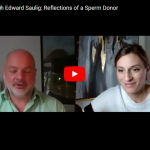Jennifer Lahl comments: My piece, ‘An Inconvenient Truth: Eggsploitation Happens‘, brought our readers out of the woodwork. The response rate was phenomenal with many people saying they just never realized how few eggs a woman has for her own future fertility. Nobody doubted the potential serious health risks to young women, which there alone should end this debate over ‘eggs for research’. Some responses though doubted the math and the notion that young women could become prematurely infertile because they have depleted their egg resources. I’ve asked a good colleague of mine to comment. Appropriately, she co-founded, Comment on Reproductive Ethics (CORE) in the UK.
Josephine Quintavalle comments: CORE press release on UK decision to pay egg donors
Apologies to those of you who argue that women have millions of eggs and donating some of them to fertility clinics or science laboratories is risk free and no big deal. You are simply not right. I suggest that we are currently meddling at great peril with the mechanics of human reproduction, especially in relationship to women’s bodies.
We might not be as bad as koala bears at reproducing, but in the mammalian stakes we’re certainly not rabbits. Human reproduction is an extremely delicate, finely tuned, low fertility system, about which even the scientists know less than they think they do.
I will deal later with the risks associated with egg harvesting, but first let me deconstruct ‘the millions’ myth with a brief overview of oocyte (egg) biology. Yes, the female foetus around the fifth month of uterine life has an extremely large number of oocyte cells, somewhere around 14 million. From then on, however, a massive process of wastage gets underway. Only about 20% of these original oocytes survive to the next stage of growth (diplotene), a number halved again as they they become follicles. Naked eggs cannot themselves produce babies – they must be surrounded by granulosa cells, and a membrane, referred to as follicles.
At birth the baby girl will be endowed with about 1.5 million at follicle stage. Wow! That’s still a lot of eggs you will be saying. But wait – further loss continues throughout childhood and it is estimated that only some 500 oocytes of the original 14 million will ever be capable of ripening,let alone going on to successful fertilisation after puberty. That’s an overall success rate of 0.000036%! Certainly not a limitless number.
And every time healthy follicles are aspirated for egg donation, that 500 overall potential total is further depleted. Hyperstimulation of the ovaries, as opposed to normal maturation, will release some 10-12 eggs at a time, almost as many as a woman produces naturally in a whole year of menstrual cycles. I appeared on TV with a woman who had had 54 eggs harvested in one single IVF retrieval process – that’s over ten percent of her whole life supply!
Another point to be made loud and clear is that we are not just dealing with limited quantities. Declining quality is also a consideration, and comes into play as women get older. By 35 her chances of conceiving in any given cycle are reduced by 50% and by 45 are down to 1%. Young women egg donors, postponing their own reproduction, may later on find themselves seriously short of good quality eggs in sufficient numbers to achieve their own pregnancies.
On this biological basis alone women should think carefully about the implications of egg donation, but let’s take a brief glance as well at the physical risks associated with egg harvesting. According to the prestigious UK RoyalCollege of Obstetricians and Gynaecologists, in their 2006 guidelines on hyperstimulation, noticeable reactions occur in 33% of IVF cycles, with an estimated 3-8% of patients showing moderate to severe reactions. Severe can mean thrombosis, renal and liver dysfunction and acute respiratory distress leading to serious morbidity. That’s without even taking into account possible pelvic infection and organ puncture during egg retrieval. A 2007 literature study on thrombosis risk associated with ovarian stimulation reveals tragic cases of death, limb amputation and hemiplegia. Those most likely to suffer are younger women without any associated disease.
So to recap: During their reproductive years women have very limited numbers of viable eggs, the artificial harvesting process is extremely invasive, and the associated risks are all too real. We must say no to egg donation for research, whether paid or unpaid. Women’s reproductive capacity should not be traded as part of the biotech commodities market.
Related News Items:
– Women will be paid to donate eggs for science
– Increase in Egg Donors Raises Concerns
– Fertility research drugs put egg donors at risk
Author Profile
Latest entries
 Sperm DonationMarch 15, 2022Venus Rising with Edward Saulig: Reflections of a Sperm Donor
Sperm DonationMarch 15, 2022Venus Rising with Edward Saulig: Reflections of a Sperm Donor BioethicsMarch 13, 2022Dr. C. Ben Mitchell: 2022 Ramsey Award Winner
BioethicsMarch 13, 2022Dr. C. Ben Mitchell: 2022 Ramsey Award Winner #BigFertilityMarch 10, 2022Documentary Explores One Woman’s Journey through Egg Donation
#BigFertilityMarch 10, 2022Documentary Explores One Woman’s Journey through Egg Donation BioethicsMarch 9, 2022Questioning the “Science” of the Gender Industry
BioethicsMarch 9, 2022Questioning the “Science” of the Gender Industry

